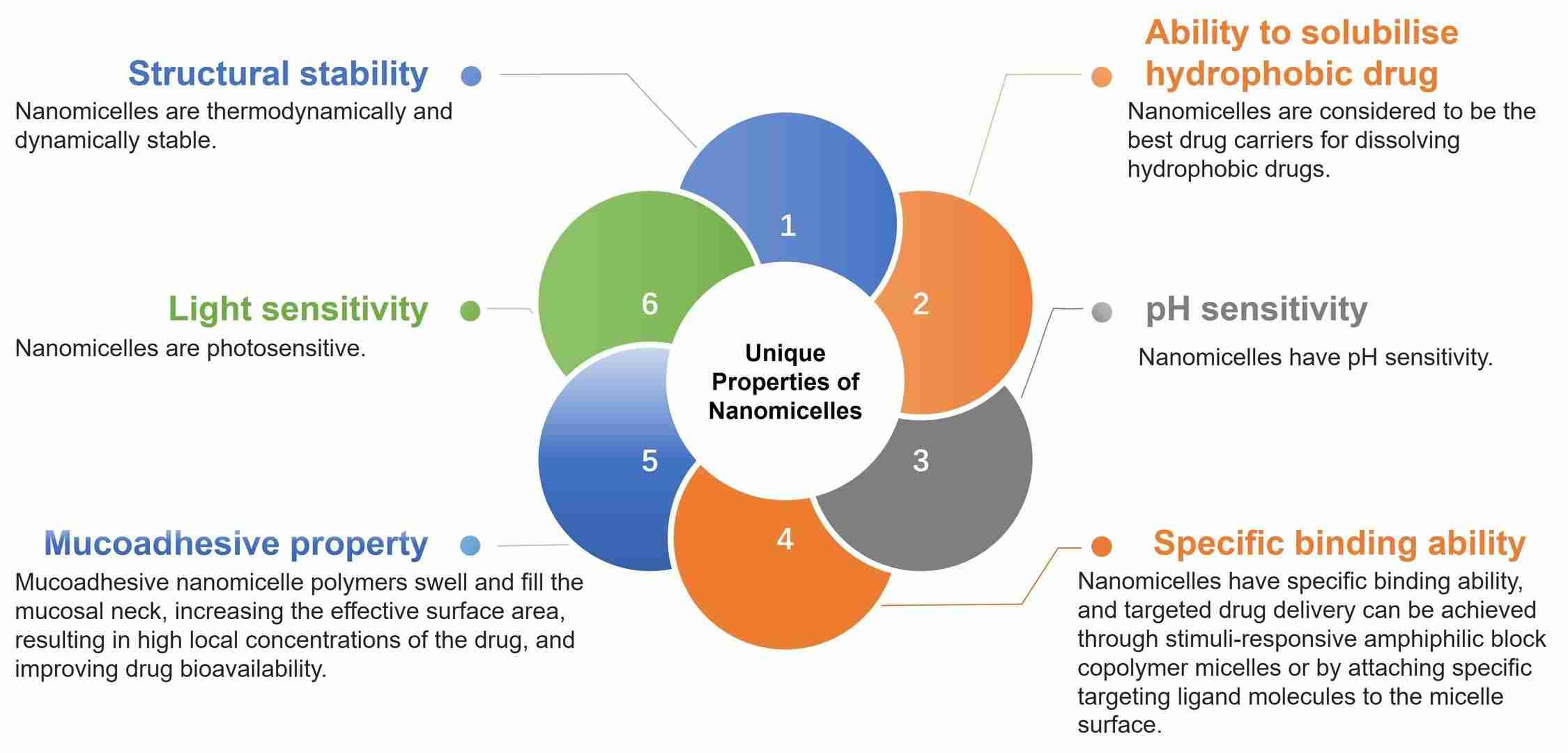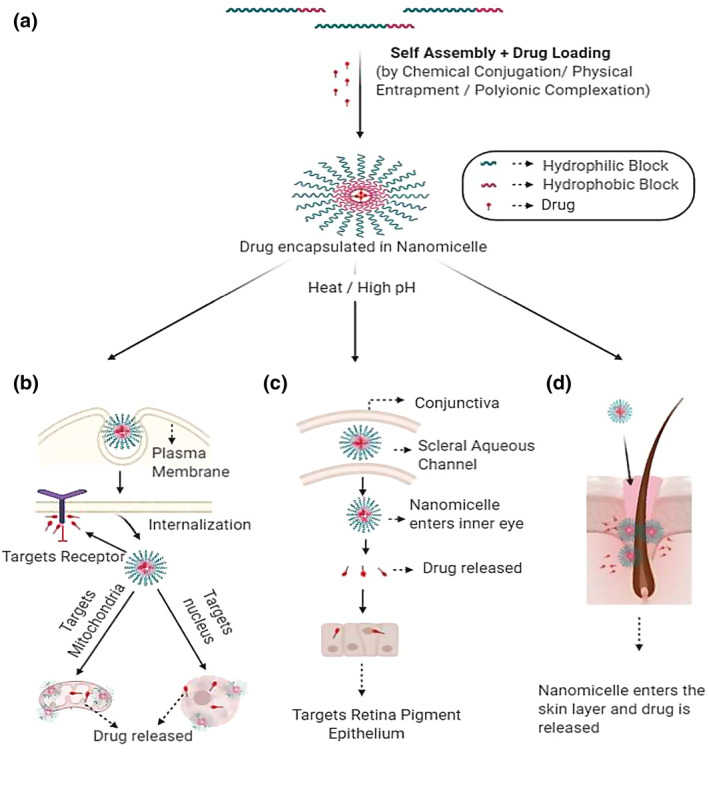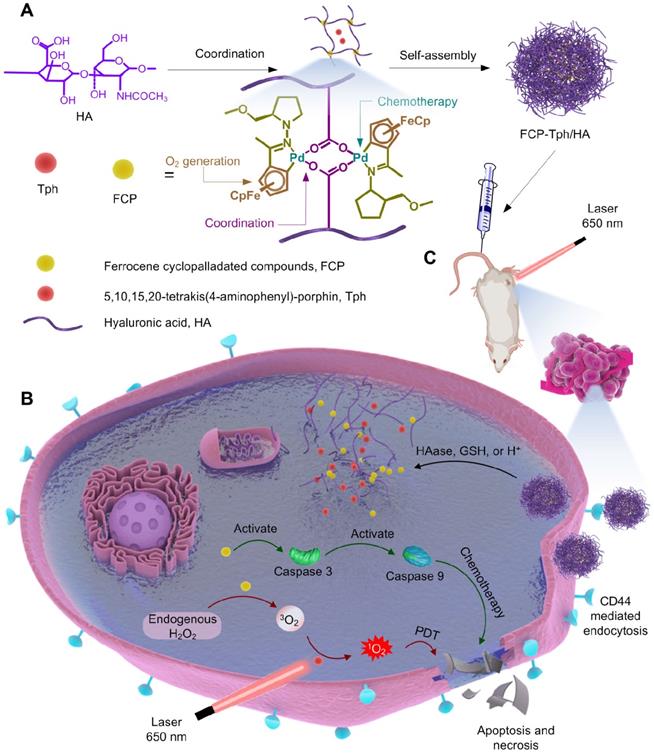Nanomicellar Technology for Nanoformulations
Inquiry
Nanomicelles are minute colloidal dispersions that self-assemble, comprising a hydrophobic core and a hydrophilic shell. Their unique properties and versatility stem from their diminutive dimensions, solubility, modifiable surface, and interactions with their environment. Nanomicelles are integral in various sectors, particularly in biomedicine. CD Formulation has pioneered a nanomicellar technology platform to facilitate the development and investigation of nanoformulations utilizing nanomicelles, assisting researchers in leveraging this technology for nanoformulation and drug delivery applications.
Advantages of Nanomicelles
The main advantage of nanomicelles is their core-shell structure and they have unique properties. The hydrophobic components within the nanomicelle shell facilitate the dissolution of hydrophobic drugs in water. At the same time, the hydrophilic shell itself protects the drug by eliminating MPS, thereby extending the circulation time of the drug. They serve as effective drug contents due to their low toxicity, minimized drug degradation, easy tissue penetration for drug delivery, and lower adverse drug side effects. Therefore, Nanomicelles have obvious advantages in drug delivery due to their special size and structural characteristics.
- Nanomicelles can encapsulate hydrophobic drugs and increase their solubility.
- Nanomicelles have target specificity.
- Nanomicelles release drugs under specific stimuli such as pH and temperature, thus having higher selectivity and lower toxicity.
- Nanomicelles are made of hydrophobic and biodegradable polymer nanoparticles. These biodegradable nanoparticles can serve as local reservoirs for drugs, which accumulate at the target site.
- Nanomicelles are more suitable for intravenous drug delivery due to their size characteristics.
 Fig.1 Unique properties of nanomicelles. (CD Formulation)
Fig.1 Unique properties of nanomicelles. (CD Formulation)
Applications of Nanomicelles
Nanomicelle-mediated drug delivery is used in a variety of therapeutics, such as cancer therapy, ocular therapy, and dermatological therapy.
Cancer Therapy: Nanomicelles are formed by self-assembly of amphiphilic molecules and then loaded with drugs to form nanomicelles encapsulating drugs. After entering the cells, the nanomicelles release drugs, targeting mitochondria, nuclei and cell membrane-bound receptors, thus serving as potential drugs for treating cancer.
Ocular Therapy: Nanomicelles enter the inside of the eyeball, release loaded drugs in the retinal pigment epithelium, and pass through the scleral aqueous humor channel, thereby effectively treating eye diseases.
Dermatological Therapy: Nanomicelles penetrate hair follicles, release drugs in skin lipids, and bypass the skin barrier to treat skin diseases.
 Fig.2 Applications of nanomicelles in cancer therapy, ocular therapy and dermatological therapy. (Anamika Bose, et al. 2021)
Fig.2 Applications of nanomicelles in cancer therapy, ocular therapy and dermatological therapy. (Anamika Bose, et al. 2021)
Nanomicellar Technology at CD Formulation
Nanomicelles are colloidal structures formed by amphiphilic monomers, and nanomicelles have structural stability. Drugs can be encapsulated in micelles, and micelles will act as carriers to transport drugs to target tissues to achieve drug delivery. CD Formulation relies on our advanced design concept and has constructed a nanomicellar technology platform for nanomicelles. We can provide you with the following methods for drug delivery using nanomicelles and nanomicelle-mediated drug loading and release.
Nanomicelle Drug Delivery Technologies
Oil-in-water (O/W) emulsion techniques: We use two immiscible liquids to form a nonequilibrium heterogeneous system, where one liquid is dispersed in the other liquid in the form of droplets (sub microemulsion).
Water‐in‐oil‐in‐water (W/O/W) emulsion techniques: We analyzed freshly prepared water-in-oil-in-water (W/O/W) emulsions using optical microscopy at room temperature.
Direct dialysis: We added a small amount of water to a solution of polymer and drug in a water-miscible organic solvent and stirred it, then dialyzed the excess water using a dialysis bag to remove the organic solvent.
Co‐solvent evaporation: We dissolve the right amount of any drug in the right amount of organic solvent and the right amount of the binder in the right amount of distilled water and mix the two solutions to get a clear solution. Finally, the clear solution is evaporated in a rotary evaporator for half an hour at a specific pressure and at a specific temperature.
Spray drying: We dissolve the appropriate amount of drug in the appropriate amount of organic solvent, dissolve a specific amount of surfactant in a specific volume of distilled water, and then mix the two solutions to obtain a clear solution. The spray-dried drug mixture is obtained in 20-30 minutes.
Nanomicelle-Mediated Drug Loading and Release
Chemical conjugation: In this technology, the drug is chemically conjugated to the core via our carefully designed pH or enzyme-sensitive linkers to form a copolymer that can be cleaved to release the active form of the drug inside the cell. The conjugate then acts as a polymer prodrug, self-assembling into a core-shell structure.
Physical entrapment: We design specific block copolymers for specific types of drugs. We can physically bind a variety of drugs into the core of the micelle by designing the structure of the core-forming segments. We can also design the molecular properties (molecular weight, composition, presence of functional groups for active targeting) within a homologous copolymer series to optimize the performance of the drug in a specific drug delivery situation.
Polyionic complexation: Charged affinity agents can be incorporated into square copolymer micelles by electrostatically binding to the counter-charged ionic moieties in the square copolymers. We have applied this approach to develop non-viral vector delivery systems by incorporating various polynucleic acids into square ionic polymer structures.
Highlights of Our Nanomicellar Technology Platform
- Our core technical team is composed of multidisciplinary talents with backgrounds in nanomedicine, nanotechnology, biomedicine, drug analysis, and pharmaceutics, and has extensive experience in nanomicelle technology research and nanomicelle preparation.
- We have established a nanomicellar technology platform for drug delivery and can help global researchers prepare nanomicelles and research nanomicelle-mediated drug loading and release.
- We are also exploring and updating more and more nanomicellar techniques depending on our nanomicellar technology platform to be suitable for more applications of drug delivery.
Custom Nanomicelle Development Services
With the support of our innovative nanomicellar technology, we provide specific nanomicelle formulation development services to meet our customers' personification needs. We have a deep understanding of the unique properties of nanoemulsions and their applications and are committed to providing customized solutions of nanoemulsions (such as polymer micelles) for different pharmaceutical and biotechnology products to improve their clinical effectiveness and robustness.
Polymeric Micelle Development for Nanomedicine
CD Formulation is dedicated to developing nanomicelles, particularly polymeric micelles, and offers custom formulation services using our advanced nanomicelle technology. Our team's extensive research enables us to create polymeric micelles for diverse applications, enhancing their clinical and commercial viability.
Published Data
Technology: Modular self-assembled nanomicellar platform
Journal: Theranostics
IF: 12.4
Published: 2022
Results:
Based on rationally designed ferrocene palladium ring compounds with photosensitizers and hyaluronic acid (FCP-Tph/HA), the authors prepared nanomicelles by coordination-driven self-assembly. The multimodal synergistic therapy of FCP-Tph/HA was studied by morphology, targeted drug delivery, pharmacokinetics, hemolysis, and so on. The results showed that the formation of nanomicelles presented a low hemolysis rate and prolonged blood circulation time. FCP-Tph/HA has enhanced the antitumor effect in vitro by combining chemotherapy with self-oxygenated PDT through the specific binding of HA to CD44. Therefore, the modular self-assembled nanomicellar platform constructed by the authors has synergistic chemo-photodynamic therapy and can be used for challenging PDT-based tumor treatment.
Here is the modular self-assembled nanomicellar platform.
 Fig.3 Schematic representation of FCP-Tph/HA for chemo-photodynamic therapy in tumors. (Guidong Gong, et al. 2022)
Fig.3 Schematic representation of FCP-Tph/HA for chemo-photodynamic therapy in tumors. (Guidong Gong, et al. 2022)
As your premium service provider, CD Formulation not only has extensive and professional resources and well-equipped laboratories, but also is able to retain intellectual property rights for our customers. Relying on our advanced and powerful nanomicellar technology platform, we are able to help customers take nanomicellar technology research to a new level. If you are interested in our nanomicellar technology services, please feel free to contact us for a more in-depth discussion.
References
- Anamika Bose, Debanwita Roy Burman, Bismayan Sikdar, et al. Nanomicelles: Types, properties and applications in drug delivery. IET Nanobiotechnol. 2021,15(1): 19-27.
- Guidong Gong, Jiezhou Pan, Yunxiang He, et al. Self-assembly of nanomicelles with rationally designed multifunctional building blocks for synergistic chemo-photodynamic therapy. Theranostics. 2022, 12(5):2028-2040.
How It Works
STEP 2
We'll email you to provide your quote and confirm order details if applicable.
STEP 3
Execute the project with real-time communication, and deliver the final report promptly.
Related Services


 Fig.1 Unique properties of nanomicelles. (CD Formulation)
Fig.1 Unique properties of nanomicelles. (CD Formulation) Fig.2 Applications of nanomicelles in cancer therapy, ocular therapy and dermatological therapy. (Anamika Bose, et al. 2021)
Fig.2 Applications of nanomicelles in cancer therapy, ocular therapy and dermatological therapy. (Anamika Bose, et al. 2021) Fig.3 Schematic representation of FCP-Tph/HA for chemo-photodynamic therapy in tumors. (Guidong Gong, et al. 2022)
Fig.3 Schematic representation of FCP-Tph/HA for chemo-photodynamic therapy in tumors. (Guidong Gong, et al. 2022)
